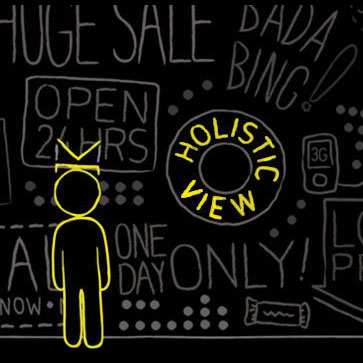How to Sell High-Ticket Products with Paid Advertising

: By Joseph Kerschbaum :
At a time when people are pinching pennies, how do Internet retailers still manage to sell their high-ticket products?
Yes, the economy is down and consumers are spending less. But that doesn't mean your more expensive items are dead in the water. Certain people will still spend. The seven steps below will help make sure you find them and turn them into paying customers.
1. Think outside Google, Yahoo! and MSN. With the economy in a rut consumers are looking for deals, even on highticket items. One alternative to the usual PPC suspects is using comparison shopping search engines. With shopping search engines, consumers can compare prices of several different companies carrying the same item. Not only can item prices be compared, but also shipping and tax amounts. The shopping search engines will then call out the company with the best overall price. Some of these shopping engines include shopzilla.com, pricegrabber.com, shop.com, buy.com and shopping.com. The strategy here is to add your highend products to these search engines. If you have the best price compared to your competition, you are likely to get the sale. However, if you don't have the best price you might want to consider some other incentives for a consumer to choose you over your lower-priced competitors. An incentive could be free shipping, a gift with purchase or a bounce-back coupon.
2. Increase traffic to your site with eye-catching ads. If you have any kind of promotion or sale (free shipping, big discounts, bounce-back coupons, buy-one-get-one, etc.) you need to promote the same in your PPC ad text - you can be sure your competitors are doing so.
If you don't have any current promotions, be sure to highlight your customer service strategy and clearly display all of your company's personal service benefits on your website. Some people are willing to pay a little more for great customer service.
To really set yourself apart from your competitors use your keyword or a key phrase in your ad display URL in Google, Yahoo! and MSN. For example, instead of www.YourSite.com as a display URL, consider www.YourSite.com/SonyTV (Sony TV is the key phrase.) This will help get the attention of consumers, as they are looking to click the ad most relevant to their search query.
3. Pull in the right people by qualifying your traffic. Add negative keywords to your PPC account. If you have broad or phrase-match keywords in Google or standard match in Yahoo, chances are your paid ad is coming up for other keywords not in your keyword list. It's also quite possible that those keywords may not be relevant to your site. For example, I had a client who sold cake toppers for weddings. So, obviously, one of my best performing keywords was broad-match "cake toppers." However, when I ran a search query report in Google AdWords I found that my ad was coming up for terms like "Spiderman cake toppers" and "Mickey Mouse cake toppers," products my client didn't carry. Little did I realize I had spent hundreds of dollars on these irrelevant keywords. Therefore, I added them as negative keywords in both my Google and Yahoo! account. Now, I have more money to spend on people who are more likely to buy from the website.
4. Save your budget for your high-priced items. By lowering bids on miscellaneous items that return a very low margin and increasing bids on your high-margin items you can maximize your overall ROI. You may end up selling fewer items but, in turn, you will sell more of your high-priced, high-margin products. For example, one of my clients sells expensive musical instruments online. Sales were down (perhaps due to the slower economy) but he continued to sell a large amount of low-priced instrument accessories. Unfortunately, these accessories take more time to package and ship and, in the end, he generated less overall revenue. Therefore, we lowered keyword bids dramatically on the accessories and increased bids on high-priced instruments. At the end of the month, he saw a decrease in overall items purchased, but his revenue and margins were much higher due to an increase in high-priced instrument sales.
5. Expand your keyword list. If you feel that only long-tail keywords are going to drive qualified traffic to your site, you might be in for a surprise. I have many general, broad-match keywords that convert regularly. The point is, you must try everything and eliminate what isn't working. To start, you could include key phrase variations with words like "buy," "shop," "purchase," or "order." These types of keywords will target consumers who are not just researching, but ready to make a purchase.
6. Build trust with your consumers. People looking to buy a high-ticket item online can be fearful if they don't recognize the name of your company. Remove any fears they may have by adding trust logos and security symbols to your site, as well as product reviews, testimonials and client logos with whom you have worked in the past. I also recommend you add a "no-hassle return policy" on every page of your site. This will ensure the consumer that if they purchase from your site and don't like the product, they can return it without problems.
7. Clean up your landing pages and/or website. Have you actually tried to make a purchase on your own website? Try it, and write down any questions or confusing elements a user might feel when checking out. Speak with your programmers and make this a priority to fix. Making it difficult for consumers to check out on your site can hurt you in several ways: you may not end up getting the sale, consumers will remember a poor experience and won't come back, or worse, they might tell all of their friends about their negative experience. Word-of-mouth testimonials and reviews have a major influence on purchasing decisions - good or bad. Giving users great experiences when checking out on your site produces loyal customers and positive word-of-mouth marketing.
Don't feel that you need to hide your high-ticket items in light of a sagging economy. There are still plenty of good tactics and strategies advertisers can utilize to increase sales of even the most expensive products. These strategies have proven their worth with my clients and they can do the same for you.
About the Author: Joseph Kerschbaum is a member of the PPC Hero team, a blog that discusses pay-per-click strategy, management, and industry updates - but with a heroic flare. Joseph is a Senior Paid Search Marketing Consultant for Hanapin Marketing, a Search Engine Marketing/Web Development firm based in Bloomington, Indiana.









